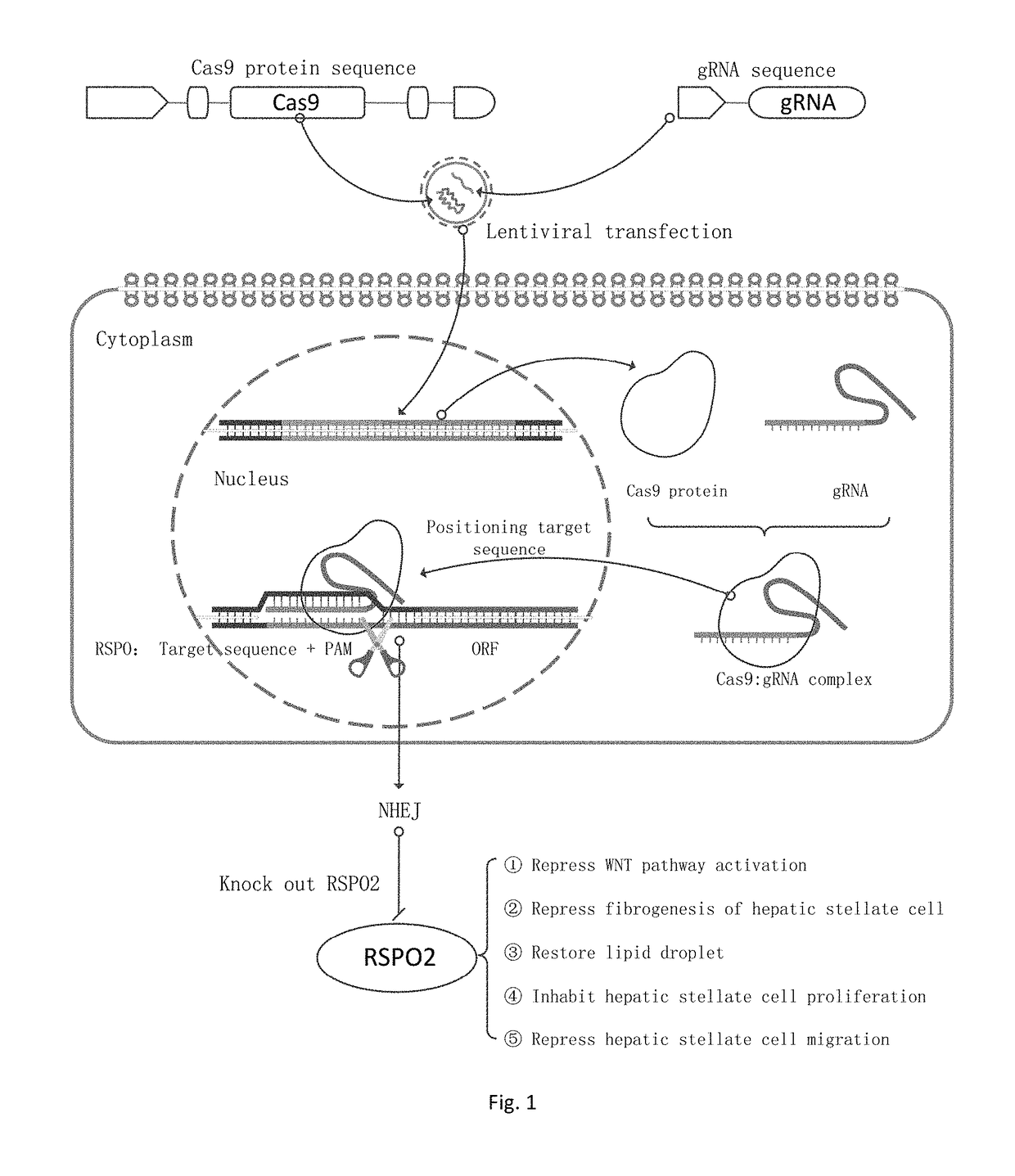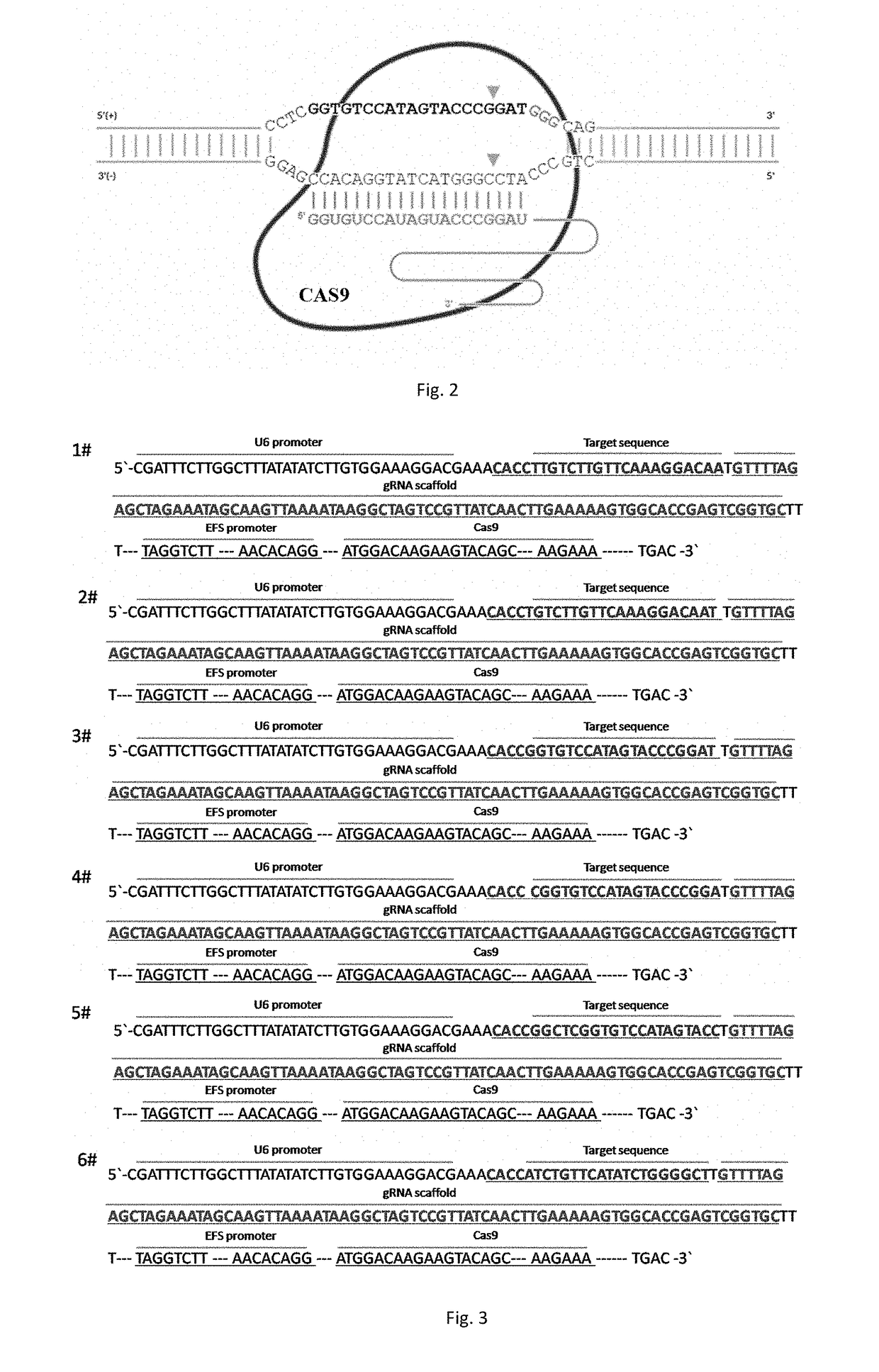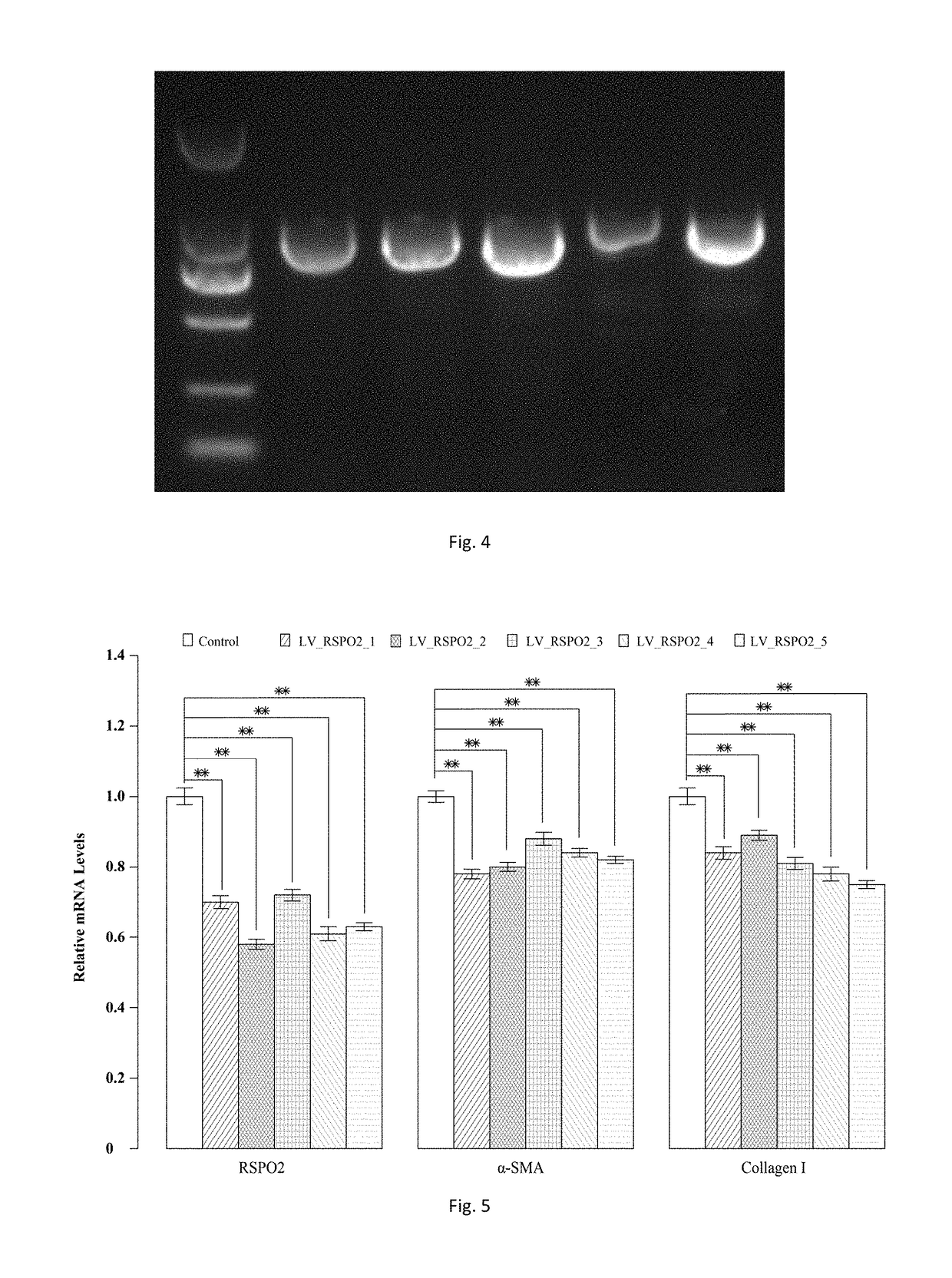sgRNA and knockout method of human RSPO2 gene targeted with CRISPR-Cas9 specificity and application thereof
a technology of rspo2 and specificity, applied in the field of biotechnology, can solve the problems of difficult development of effective antibodies, limited use of rspo antibodies for target gene therapy, adverse biological effects, etc., and achieve the effect of repressing the competence of the wnt signal pathway, effectively suppressing the hepatic stellate cell activation, and long-term inhibition effect of target gen
- Summary
- Abstract
- Description
- Claims
- Application Information
AI Technical Summary
Benefits of technology
Problems solved by technology
Method used
Image
Examples
embodiment 1
sgRNA Sequence
[0061]Based on the experiences, the sgRNA sequence is designed to satisfy the follow conditions: (1) a length of the sgRNA is 20 nucleotide sequences; (2) a sgRNA target on the RSPO2 gene locates in an exon thereof, which easily leads to deletion of gene fragments or frameshift mutations, so as to complete gene inactivation; (3) preferably, the sgRNA target on the RSPO2 gene locates in a functional domain thereof, so as to complete gene inactivation more easily; (4) Blast in a NCBI database is used to identify unique sgRNA target sequence, reducing potential off-target sites; (5) 5′-NGG is selected for PAM of a target sequence; (6) preferably, a sgRNA target sequence is started at G to ensure an effective U6 promoter of a vector; and (7) a format of the sgRNA target sequence is as follows:
[0062]forward oligo: 5′-G-(19N)-NGG-3′
[0063]reverse oligo: 5′-CCN-(19N)-C-3′ (19N denote 19 nucleotide sequences of the target)
[0064]or
[0065]forward oligo: 5′-(20N)-NGG-3′
[0066]revers...
embodiment 2
e sgRNA Sequence
[0068]Paralogy analysis is provided between candidate sgRNA sequences and a genome database by adopting Blast (www.ncbi.nlm.nig.gov / Blast) to ensure the uniqueness of the sgRNA which is not paralogous to the gene sequences other than the human RSPO2 genes. The sgRNA sequences for effectively knocking out human RSPO2 genes are selected based on the following rules: (1) the sgRNA target locates in DHSs (DNase hypersensitive sites); (2) the sgRNA target is not to close to a start cordon (ATG); (3) an off-target rate is low.
[0069]Five sgRNA sequences corresponding to different targets of the targeted human RSPO2 genes satisfy the rules and are selected from 20 sgRNA sequences of the targeted human RSPO2 genes (corresponding to SEQ ID NO.2, 4, 6, 8, 10 in the sequence list), and the other fifteen cannot satisfy the rules. The sgRNA target sequences and the corresponding PAM sequences are listed in Table 1 (corresponding to SEQ ID NO.1, 3, 5, 7, 9 in the sequence list).
embodiment 3
sgRNA Oligo
[0070]Adding BsmBI cutting site onto a 5′ end of the sgRNA sequences of the targeted human RSPO2 genes comprises steps of:
[0071](1) adding a CACC (complementary sequence of BsmBI cutting site cohesive ends) and a G (to ensure the effective U6 promoter) on a 5′ end of a corresponding DNA sequence to obtain a forward oligo based on the selected sgRNA; and (2) obtaining a complementary strand of a corresponding DNA based on the selected sgRNA; adding a to AAAC (complementary sequence of BsmBI cutting site sticky ends) on the 5′ end of the corresponding DNA sequence and adding a C on a 3′ end to obtain a reverse oligo; and (3) synthesizing the forward oligo and the reverse oligo by chemical synthesis method to obtain the oligos as shown in the table 2.
PUM
| Property | Measurement | Unit |
|---|---|---|
| Basic Local Alignment Search Tool | aaaaa | aaaaa |
| distance | aaaaa | aaaaa |
| length | aaaaa | aaaaa |
Abstract
Description
Claims
Application Information
 Login to View More
Login to View More - R&D
- Intellectual Property
- Life Sciences
- Materials
- Tech Scout
- Unparalleled Data Quality
- Higher Quality Content
- 60% Fewer Hallucinations
Browse by: Latest US Patents, China's latest patents, Technical Efficacy Thesaurus, Application Domain, Technology Topic, Popular Technical Reports.
© 2025 PatSnap. All rights reserved.Legal|Privacy policy|Modern Slavery Act Transparency Statement|Sitemap|About US| Contact US: help@patsnap.com



